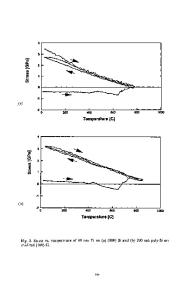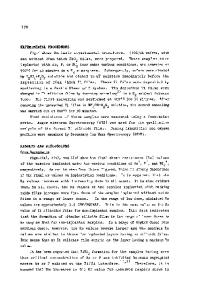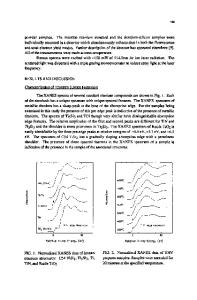Formation of Titanium Silicide on Ion-Implanted Silicon
- PDF / 1,022,039 Bytes
- 6 Pages / 414.72 x 648 pts Page_size
- 47 Downloads / 344 Views
Introduction Titanium is currently the material of choice in contact metallization of Si devices since it has a low sheet resistance, it is effective in reducing native oxide formed on the Si contact, and it has a barrier height which is roughly half of the Si band-gap . The Ti barrier height on Si enables achievement of similarly low contact resistance values on both n type and p type Si [1,2]. There is a certain process window for the formation of titanium silicide. This process window is defined on the one hand by the minimal temperature required to achieve the stable low resistivity C54 phase, and on the other hand it by the temperature at which the titanium silicide agglomerates into a discontinuous layer [1,3,4]. As the device size shrinks, the transformation temperature to form TiSi 2 C54, increases and the process window for the formation of Ti silicide narrows. Since the TiSi 2 is formed on the source and drain areas of the CMOS devices, which are p or n doped by ion implantation, the type and amount of implantation can also play a role in defining the TiSi2 formation process window [5,6,7] The purpose of this work was to study the formation of TiSi 2 over ion implanted Si. The formation of titanium silicide was compared for substrates implanted with arsenic and BF 2 ions at different doses and annealed at different conditions in a rapid thermal process.
Experimental The parameters used in this experiment were chosen according to the parameters of the process that was developed at Tower Semiconducor using the facilities available at the production line. 6" p type boron doped Si wafers with a resistivity of 3-9 Q-cm were used as substrates. The samples for the analysis were taken from the center of the wafer in order to avoid variability due to issues of process uniformity across the wafer in different production tools. Ion * Present adress: AGI-Inc, 4425 Fortran Dr., San Jose, CA 95134
253 Mat. Res. Soc. Symp. Proc. Vol. 470 01997 Materials Research Society
implantation was done in an Eaton 10-160 implanter. The implant energy for all samples was 50 keV. Arsenic implant doses were lxlO 15 and WxlO 16 cm".-2 BF 2 doses were lxlO 15 , 3x10 15 and 8x1015 cm-2 . After the ion implant the wafers were annealed in a furnace in order to electrically activate the implant. The As implanted wafers were annealed for 1 hr at 9500C in N2 and 02. The BF 2 implanted wafers were annealed for 1 hr. at 9000C in N2. After implant anneal the wafers were pre-cleaned for 1 min in a wet bath containing H20:HF 10:1 at 24 0C. This treatment removed the thermal oxide formed on the wafers during the implant anneal. Titanium was sputtered in an Electrotech MS6200 system; the base pressure was lxl0 7 Torr; the chamber temperature was 3000C. The RTP treatments were carried out in an AG Heatpulse 610 system with a ramp rate of 150°C/sec. Auger Electron Spectroscopy (AES) and Rutherford Backscattering Spectrometry were used to study interdiffusion and compound formation due to the applied heat treatments. Dopant redistribution was det
Data Loading...







